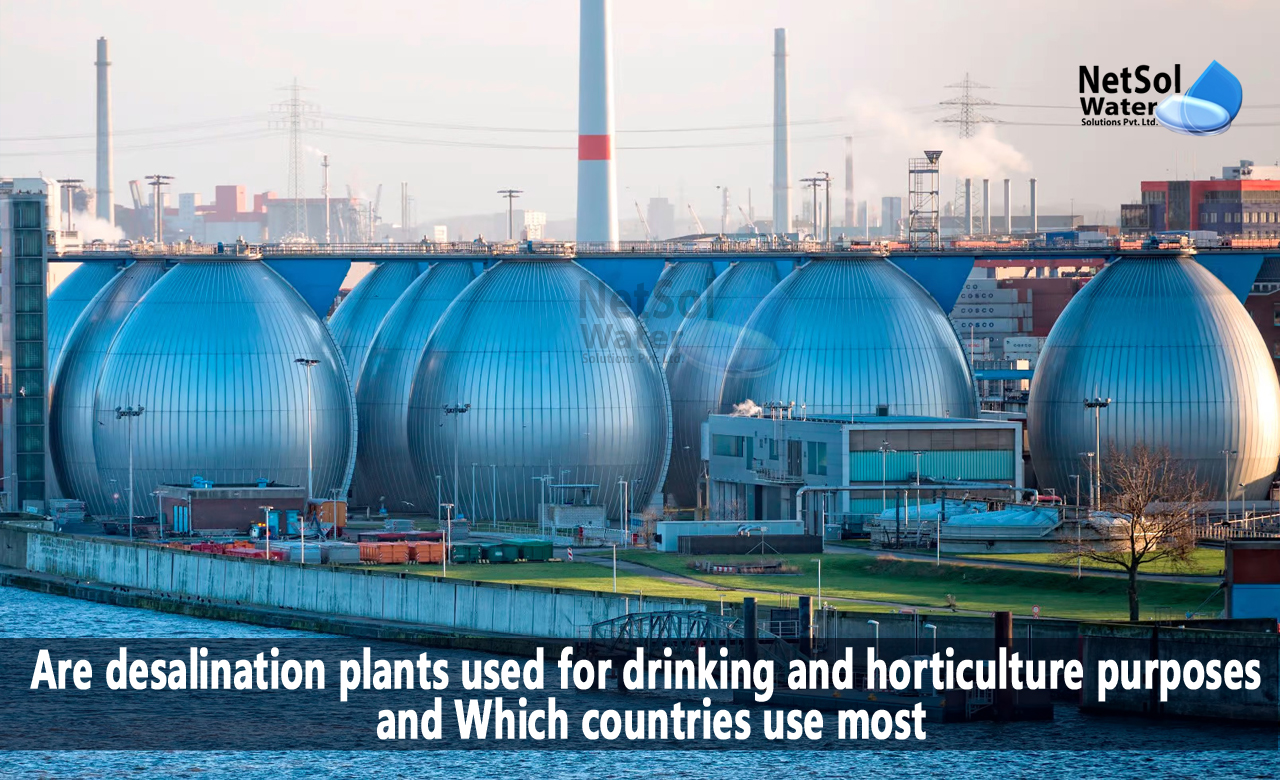Are desalination plants used for drinking and horticulture purposes?
Animals and humans both require fresh water for their survival. This should not be an important concern for people who live on a world that is 70% water. Sadly, the majority of this water is salt water rather than pure water. Freshwater resources are now in short supply due to the widespread drought, and we are developing answers to the issue, one of which is the construction of desalination plants, which is already being done by some nations.
What is desalination?
Desalination is a method used to remove minerals from saltwater. It describes the process of removing minerals and salts from a specific substance (like soil desalination, an issue for agriculture).
Reverse osmosis, which involves applying external pressure to force solvents through a membrane from an area of high solute concentration to one of low solute concentration, is the method most frequently used for the process.
The membranes' microscopic pores let water molecules pass through while blocking salt and the majority of other impurities, releasing pure water from the other side.
What are desalination plants?
Desalination plants are those that convert salinized water into drinkable water. The primary goal of the desalination plant is to transform brackish or saltwater into water that is appropriate for drinking, irrigation, or industrial use.
Types of desalination plants:
A typical desalination plant will include one of the following:
· A low-pressure evaporator and reverse osmosis (RO) plant combined.
· A single low-pressure evaporator only.
· A single reverse osmosis plant only.
Low pressure evaporators are installed when there is plenty of waste heat, usually this heat is provided from a power station if the site is situated on the ground, or an engine when the plant is situated on board a ship.
Low pressure evaporators are typically preferred by merchant naval ships because they enable freshwater production using engine waste heat. On smaller marine boats, RO plants are preferred because they can run without a heat source.
In the absence of a heat source, a desalination facility will only use RO membranes.
Is desalinated water suitable for use for drinking and cultivation?
Desalination is now a very cost-effective way to deal with the freshwater shortage that usually affects tropical and offshore regions.
Desalination facilities offer water that can be applied to agriculture. It can help many businesses that depend on water for routine operations to feel less stressed during this severe drought our nation is currently experiencing.
The desalination core procedure relies on Reverse Osmosis Membrane technology, but stand alone, it fails to supply safe drinking water, nor does it ensure an efficient plant. The saline water which goes through this procedure is monitored and examined in the identical manner as water from a filtration plant.
Countries that rely on desalination:
1. Saudi Arabia: Saudi Arabia produces more desalinated water than any other country in the world, with a daily capability of 117 million cubic feet. The desalination plants use two distinct desalination processes: seven plants use multi-effect distillation, eight plants use reverse osmosis technology, and 12 plants use multi-stage distillation. With a maximum output capacity of 882,867 cubic feet, the nation is home to the biggest floating desalination plant on the globe.
2. Kuwait: Middle Eastern country Kuwait is an arid nation. The nation depends on its desalination plants for its fresh water because it has an extreme shortage of natural freshwater supplies and no enduring rivers. In 1951, the nation made history by becoming the first nation to build a sizable desalination plant for the purpose of providing clean water on a big scale.
3. United Arab Emirates: The United Arab Emirates is a desert country with a per capita freshwater requirement of 650 litres per day and highly limited freshwater resources. Aquifers are the main supply of fresh water in the UAE. However, most of the aquifers' water is salty, with some of them having salinities up to eight times greater than those of saltwater. This indicates that it is unfit for ingestion by people. As a result, the government of the Gulf state of Abu Dhabi, which is headquartered in Abu Dhabi, has established eight desalination plants in the Gulf state at a cost of more than $3.2 billion. An organization made up of government and international investors runs these desalination facilities.
Conclusion:
Desalination plants can be very helpful in arid regions or areas that are suffering from severe drought, but it's essential to balance the benefits and drawbacks before making any decisions about building one. It has both positive and negative environmental effects, and in a poor nation, the costs might outweigh the advantages.
Do you need an advice or assistance on selecting the best water and waste water treatment unit? We have solutions for all your problems!
Let us now your problem, our experts will make sure that it goes away.
For an assistance or related query,
Call on +91-965-060-8473
Or write us at enquiry@netsolwater.com



